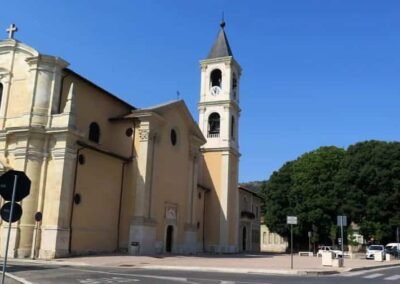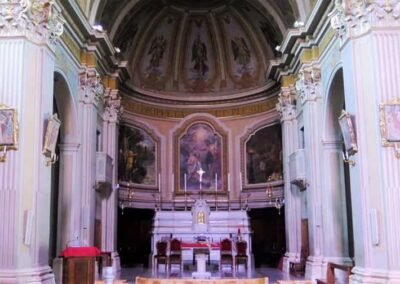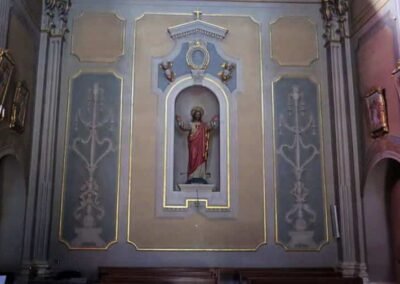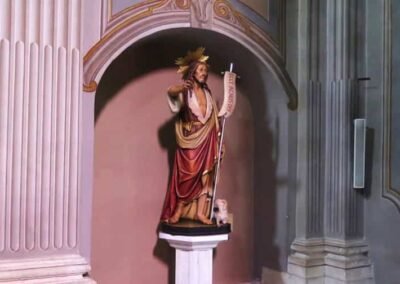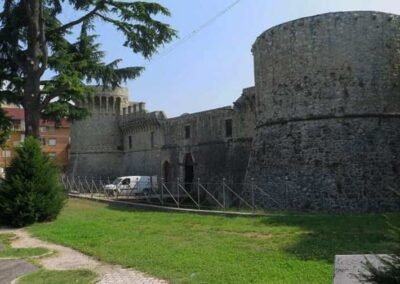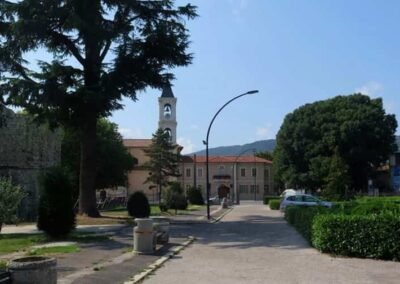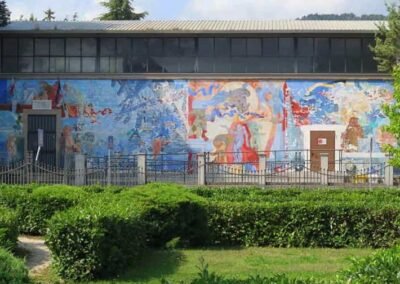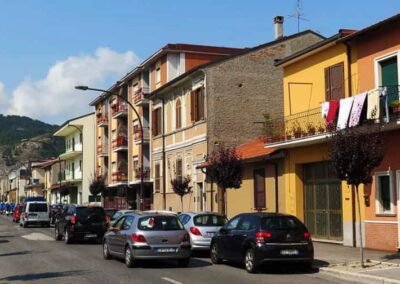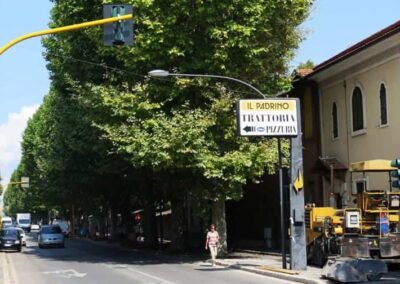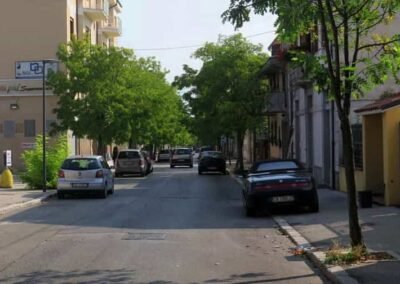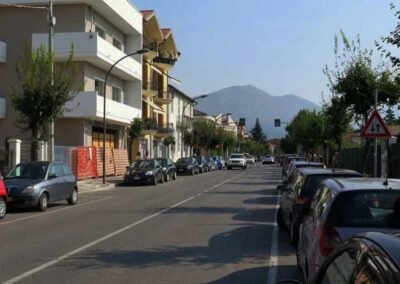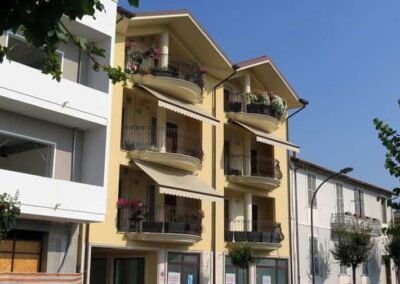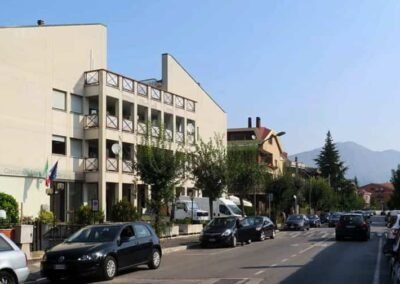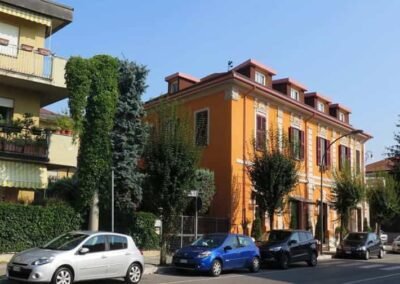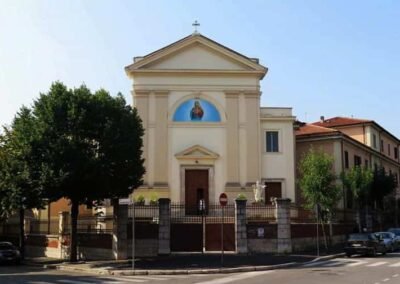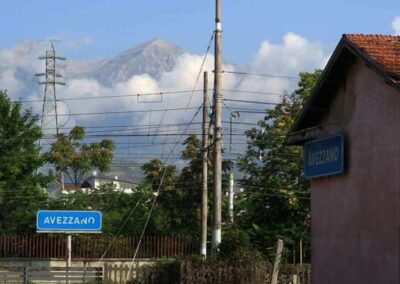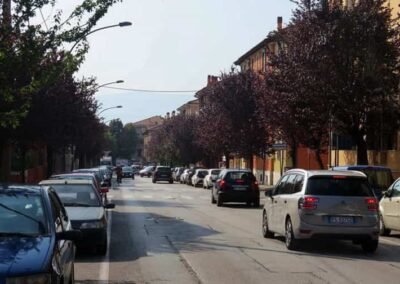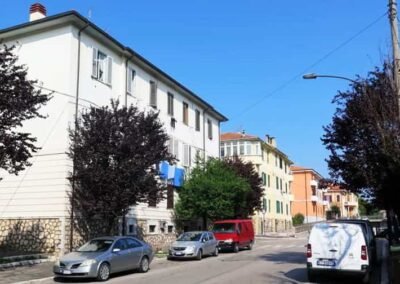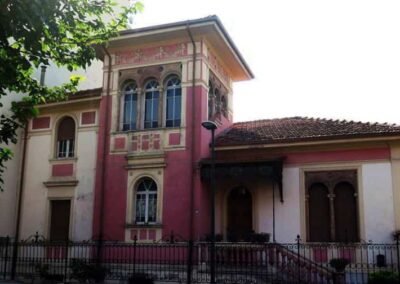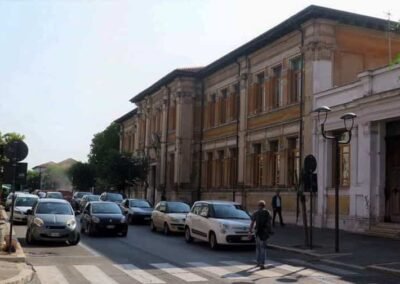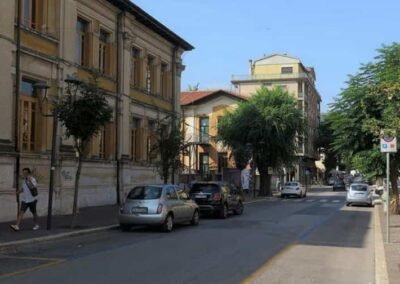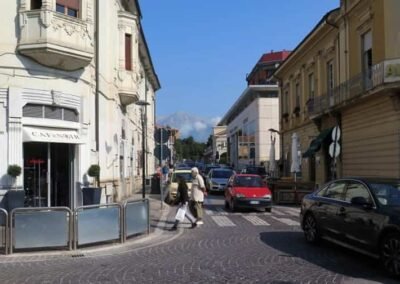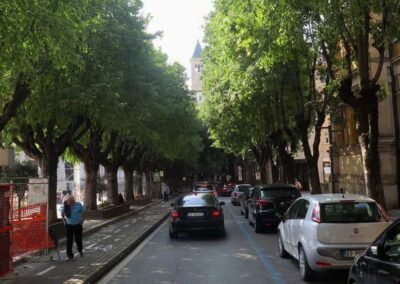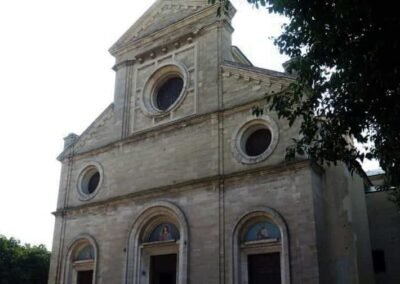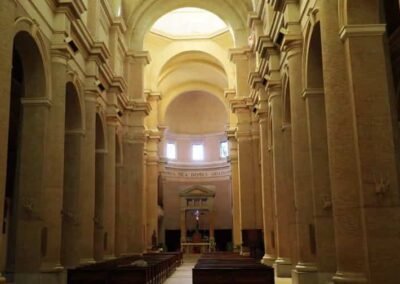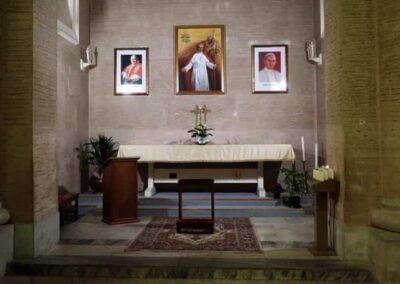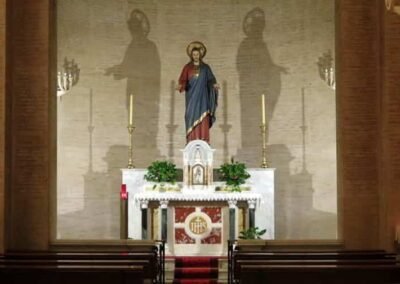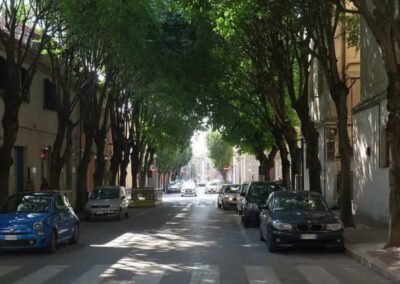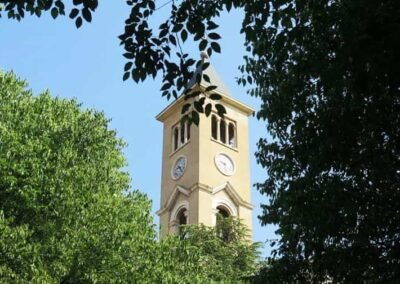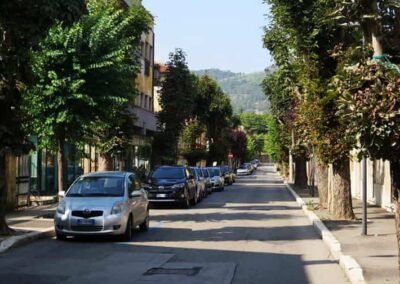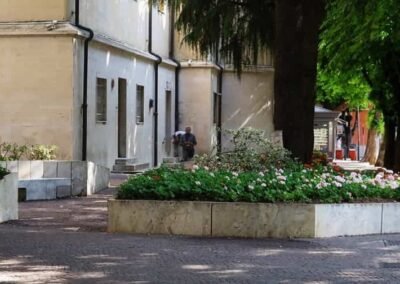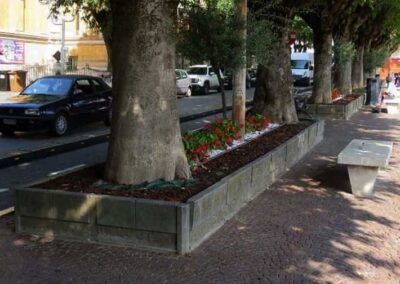HOME
THE REGIONS OF ITALY
PLACES IN ITALY
Italy in Photos
Via N. Sauro, 67051 Avezzano, Italy (September 2018)
Avezzano
Avezzano is a vibrant city located in the heart of the Abruzzo region in central Italy. It lies within the province of L’Aquila, surrounded by the imposing Apennine Mountains and the fertile plains of the former Lake Fucino basin. With its rich history, strategic location, and dynamic community, Avezzano stands as one of the most important centres in the Marsica area. Modern yet deeply connected to its past, the city offers a fascinating blend of natural beauty, cultural heritage, and innovation.
Historically, Avezzano’s origins trace back to ancient times, when the Marsi, an Italic tribe, inhabited this part of Abruzzo. The area gained prominence during the Roman era due to its proximity to Lake Fucino, once one of the largest lakes in Italy. For centuries, the lake influenced the lives of the inhabitants, providing fertile land for agriculture and serving as a natural defence. In the nineteenth century, the ambitious engineer Alessandro Torlonia undertook the monumental project of draining Lake Fucino, transforming it into one of the most productive agricultural regions in Europe. This achievement reshaped the local economy and laid the foundation for Avezzano’s modern identity.
Tragically, much of Avezzano’s original architectural heritage was destroyed in the devastating earthquake of 1915, one of the deadliest in Italian history. The city was almost entirely rebuilt in the following decades, resulting in a modern urban layout that distinguishes it from many other Italian towns. Today, Avezzano combines contemporary infrastructure with cultural institutions that honour its resilient past. Monuments such as the Orsini-Colonna Castle, one of the few surviving medieval structures, and the Cathedral of Saint Bartholomew, symbolizing rebirth after the earthquake, stand as powerful reminders of the city’s endurance.
Surrounded by natural wonders, Avezzano also serves as a gateway to the Abruzzo, Lazio, and Molise National Park, one of Italy’s most important protected areas. The nearby mountains and nature reserves offer opportunities for hiking, skiing, and exploring the region’s wildlife, including bears, wolves, and eagles. Agriculture remains a cornerstone of the local economy, particularly the cultivation of potatoes, carrots, and other crops grown in the rich soil of the former lakebed.
Today, Avezzano represents the spirit of modern Abruzzo, a city shaped by history, rebuilt through determination, and thriving amid the balance of nature and progress. It stands as a testament to human resilience and the enduring charm of Italy’s heartland.
Worth a Visit
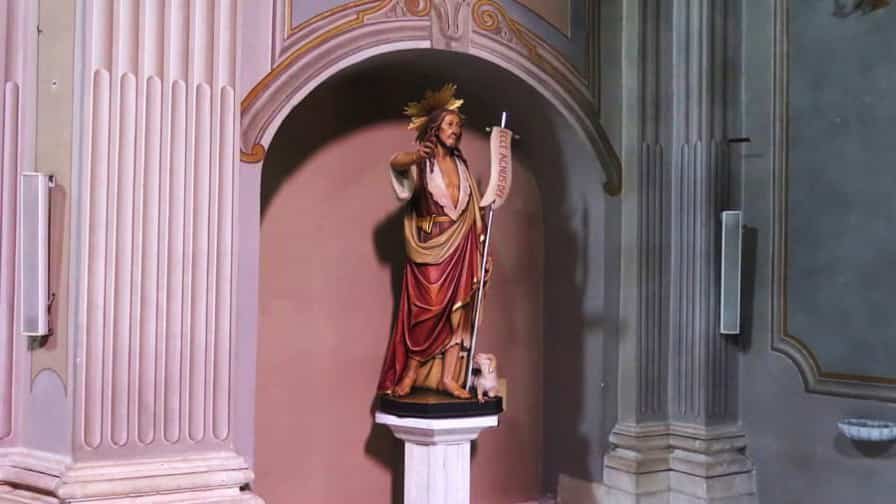
The Chiesa di San Giovanni Decollato in Avezzano is one of the city’s most historically significant sacred sites, blending layers of medieval origin, Baroque elegance, and twentieth-century resilience. Founded in the early 14th century thanks to the patronage of the powerful Orsini family, the church was originally dedicated to St. Francis of Assisi. It occupied a prominent position in medieval Avezzano, adjacent to the imposing Orsini‑Colonna Castle. Between 1718 and 1744, under the influence of the Colonna family, the church was expanded and embellished. The elegant stone façade—crafted by master Porreca—survived the devastating 1915 Marsica earthquake, though the dome collapsed completely.
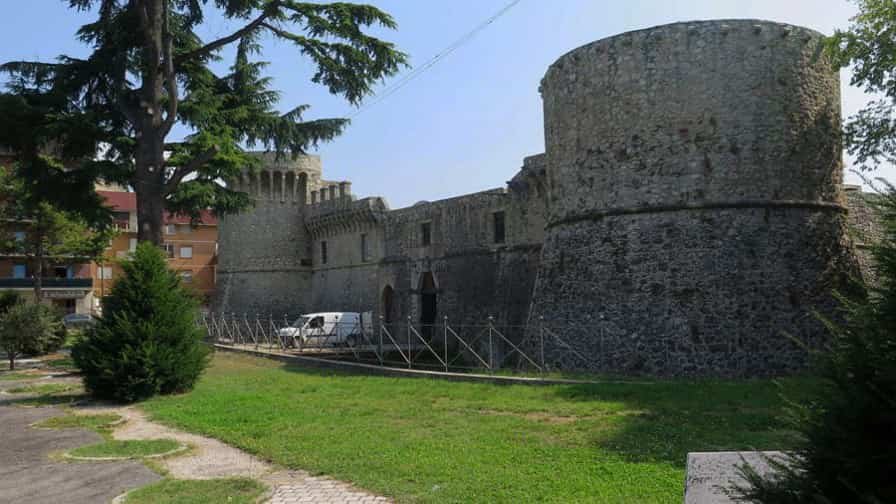
The Castello Orsini‑Colonna in Avezzano, Abruzzo, stands as an enduring symbol of the city’s layered history—its medieval roots, Renaissance, and modern cultural revival woven into its walls. Built in 1490 at the request of Virginio Orsini, the castle rose upon the remains of a medieval watchtower initially erected in 1181 by Gentile di Palearia to control the territory. Conceived as a formidable fortress, its design likely involved the renowned military engineer Francesco di Giorgio Martini, whose influence shaped many Orsini fortifications in the region. In 1565, the celebrated Marcantonio II Colonna, fresh from his triumph at the Battle of Lepanto, transformed the austere fortress into a dignified fortified residence.
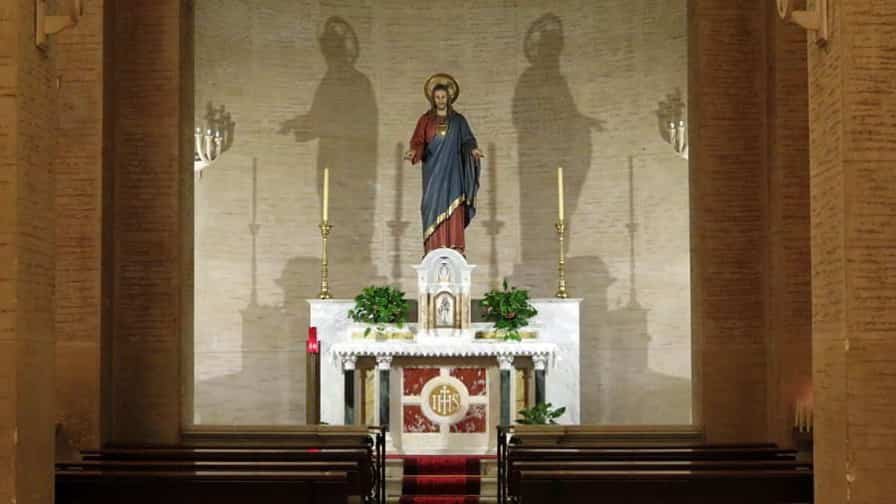
The Collegiata di San Bartolomeo, today known as the Cathedral of Avezzano, stands as a living monument to resilience, faith, and urban transformation in the heart of Abruzzo. With origins tracing back to the early Middle Ages, this sacred site has been rebuilt multiple times, offering visitors a layered narrative of devotion, architecture, and collective memory. Construction began around the year 1000, initially dedicated to St. Anthony the Abbot and later rededicated to Saint Bartholomew the Apostle. In the 12th century, it received the prestigious title of royal chapel from King William II of Sicily. Over subsequent centuries—particularly the 16th-century Renaissance and beyond, it was expanded and elevated to the status of a Collegiata in 1572 under the Tridentine reforms, joining the income and administration of twelve neighbouring churches.
Photo Gallery of Walk in Avezzano – Piazza Castello to Piazza Risorgimento
Approximately 2.37 km – 1.47 miles
The walk starts at Chiesa di San Giovanni, Piazza Castello – Castello Orsini-Colonna, Piazza Castello – Via Roma – Via F. Crispi – Via Monte Velino (The Town Hall) – Sacro Cuore di Gesù, Via Monte Velino – Via Armando Diaz – Via Camillo Corradini – San Bartolomeo, Piazza Risorgimento – Spire of San Bartolomeo, Via N. Sauro
COPYRIGHT © 2018-2025 ITALY IN PHOTOS - ALL RIGHTS RESERVED
